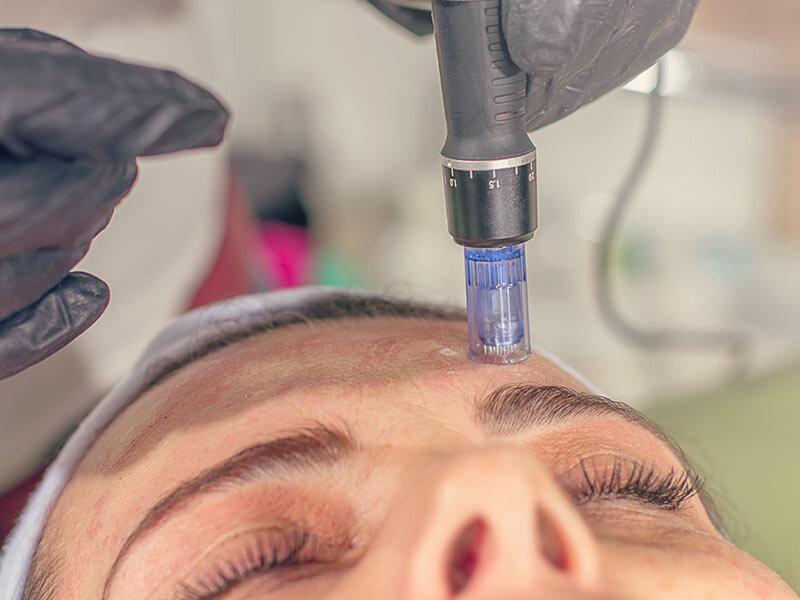What is Microneedling?
A microneedling pen is a device with tiny needles that penetrate and create little wounds in the skin. Microneedling is done for exfoliation, to enhance the penetration of skincare products, and for the creation of more collagen. These little wound channels from the pen incite a process of healing, and this process to leads to an increased level of collagen and cell turnover. Likewsie, microneedling is often used for acne scars and decreasing the appearance of wrinkles and fine lines. It’s not recommended for popping pimples though. However, it can be effective in the prevention of acne. Microneedling pens can prevent acne by allowing or a more efficacious delivery of topical ingredients like hyaluronic acid and antioxidants. Microneedling is also an option for improving cellulite as well.
As mentioned before, microneedling is the insertion of fine needles into the very top layers of the skin. However, some pens have irregular needles that are pointed diagonally or at different angles. Therefore, the needles cannot go straight in, and that can produce scaring. Cheaply made needles, may come off and get lost in the skin.
What’s the difference between DIY and Professionally Done?
Overally, DIY microneedles are much different than the needles used in professional offices. In dermatology offices, microneedling is paired with something called radiofrequency. This is a type of energy that is delivered to the deeper layers of the skin. The energy heats those layers up and increases even more collagen production. Insulation is pretty important for producing real collagen induction, decreasing collateral damage, cauterizing bleeding, and concentrating the tip.
Furthermore, at-home microneedling treatments are more risky, and may not bear the results you are looking for. Without training, it’s much more difficult to decide how far you should adjust the needle’s length and speed upon penetration. Our face does not have the same thickness all over. So, that control is very important. For example, the skin on your nose is a lot thicker than the skin on your cheeks and neck. If you penetrate an area of your face too deeply, this could cause Post Inflammatory Hyperpigmentation and hypertrophic scars. Furthermore, if you go too fast, the needles can rebound, cause tearing, or not penetrate the skin properly. Given that, it’s important to have the thickness of your skin evaluated because the whole process of microneedling should be tailored to that.
As for the difference in the tools used, Dermatologist Davin Lim in his video “DIY Microneedling treatments & Clinical Microneedling: What’s the Difference?” recommends that DIY needles should 0.1 - .3 millimeters long. This is the safest length for a DIY needle, but this is kind of a superficial penetration. It’s not going to give the amount of collagen induction needed to produce poweful results. On the other hand, they can definitely enhance the penetration of skincare used to treat acne, hyperpigmentation, and dullness. It’s important to tread with caution though because products that you buy at the store often have unstable ingredients meant for topical applications. Many products, especially vitamin C serums, have ingredients like preservatives and fragrances that could cause a reaction.
Moreover, it’s important to consider the risk of infection. It can be difficult to thoroughly and consistently steralize these tools even if the needles are disposable. Plus, if an infection already exist in one part of your skin, you introduce that infection to another part of your skin.
Finally, it’s important not to use the pen under your eyes, and it’s important to use conservative treatments at home. However, you’re going to want to have your skin evaluated and treated by a professional if you want deeper dips that truly stimulate collagen and soften atrophic scars.

